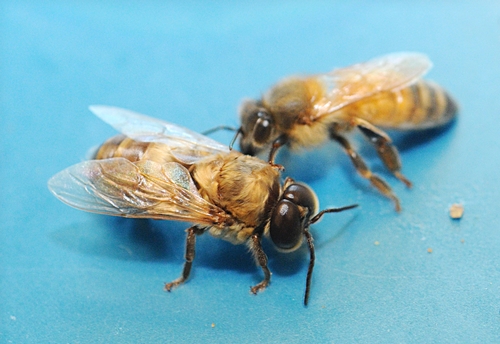Drones--remotely piloted aircraft used in reconnaissance and target attacks--are in the news, but so are the other drones--male bees.
This time of year drones are as scarce as the proverbial hen's teeth. They're not needed in the hive now--just extra mouths to feed--so their sisters are booting them up. They're basically evicted, cold and shivering, from the hive.
Drones are easy to identify: big eyes, bulky body, and lumbering movements.
It's best to be a drone in the spring. When a virgin queen goes for her maiden flight, a group of drones will mate with her in the drone congregation area. The drones die shortly after mating. If they don't mate, then they'll die before winter sets in.
As Extension Apiculturist Eric Mussen of the UC Davis Department of Entomology faculty says: First the sisters stop feeding their brothers so they're easier to push out.
Then, out they go.
The sisters have no pity.
Attached Images:

Drone and worker bee

Big Eyes, Bulky Body

Close-Up